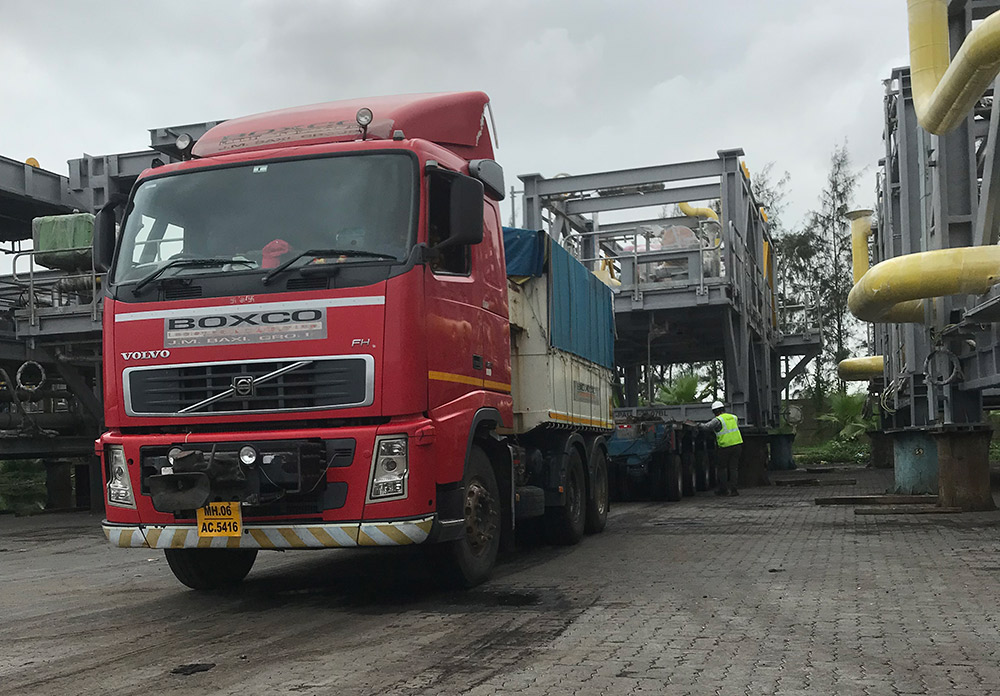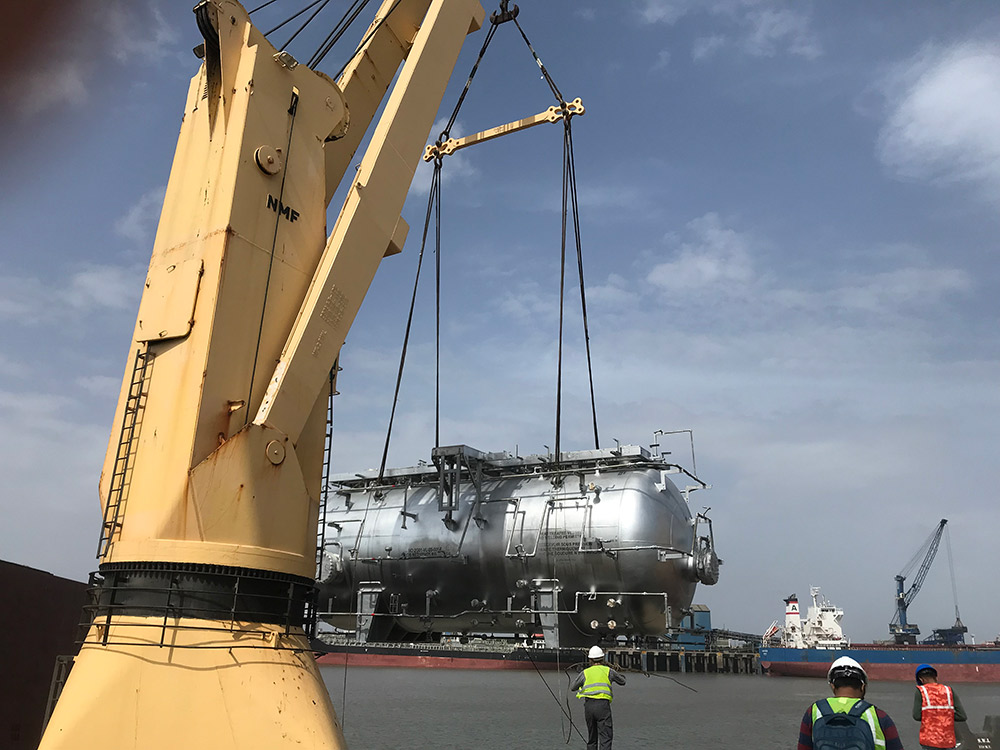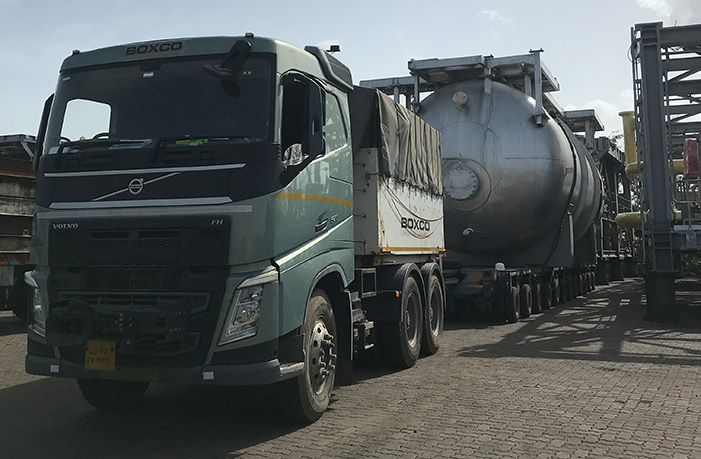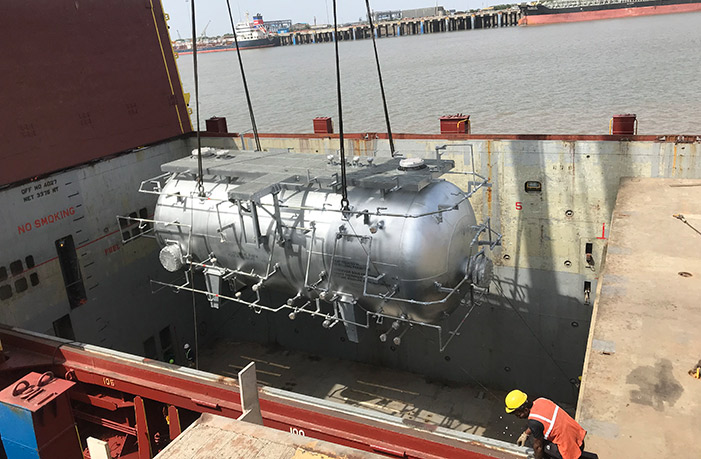Larsen & Toubro Hydrocarbon Engineering Ltd (L&THE), a subsidiary of the Indian conglomerate Larsen & Toubr q o, are he engineering, procurement, and construction (EPC) and commissioning contractors for Sonatrach SPA’s three separate central gas-processing facilities in Adrar Province in Algeria.
Sonatrach SPA is Algeria’s state-owned oil company, and the order with L&THE, apart from being a mega order in terms of value, is also a prestigious one and was awarded to the company after an international competitive bidding process.
| THREE SITES IN ALGERIA | |
|---|---|
| All modules were fabricated in house at L&T’s manufacturing facilities at Hazira, State of Gujarat, India. | |
| Site 1 | Hassi Ba Hamou and Reg Mouaded fields, 6 MMSCMD |
| Site 2 | Hassi Tidjerane field, 4 MMSCMD |
| Site 3 | Tinerkouk field, 4 MMSCMD |
MMSCMD is million standard cubic metres per day (of gas).
For a marquee Indian company to deliver a prestigious foreign EPC project of such size and scope demands first-rate logistics.
This was not just another movement, but movements for an entire project, delivered on one chartered vessel after another in rapid succession. Only a high degree of coordination between all entities – the client, the suppliers, the port, the customs teams along with the equipment, axle, puller and trucking teams – could make the operation flow at all, let alone flow safely, economically and in a predetermined sequential manner. Apart from the intense work for documentation, permissions, port area supervision, stowage management, customs and allied clearances, etc., the management of the flow in such large projects is as much a technical problem as it is an art. It takes creativity, foresight and experience to understand and execute the transit, storage sequence and then vessel feeding sequences with their varied timelines and space constraints.
After all, the engineering and construction for the project, despite being in the traditional oil and gas sector, were thoroughly modern. The construction was modularised and standardised across the three sites, and the construction requirements at the foreign locations were to be kept to a minimum. There are obvious advantages of such an EPC method due to the economies of scale by fabricating everything in the same place. However, the resulting logistics demands are concomitantly higher. The large and unwieldy modules had to be collected, stored and loaded onto vessels in the exact sequence in which they would be offloaded and dispatched to their respective sites at the destination, where they would be erected as per the plan. Any rework or unnecessary handling of these items, apart from being expensive, would also be undesirable, since only expert attention makes handling possible for these modules and keeps them safe from any damage.
That there would be challenges and problems along the way was a given.
J M Baxi Heavy was central to meeting the challenge, and it deployed a seasoned operations manager – a veteran of many such challenges – at the site for an extended time to coordinate the work. The overall team comprised 26 personnel. Of these, two supervisors, six drivers, and six operators and helpers reported to him on site. There were 84 axles and 6 pullers stationed at the location for the assignment. The local Surat– Hazira customs brokerage personnel were also seconded to the operations manager, thereby establishing a strong, integrated and resourceful team to handle the work. Thus, diverse activities – like documentation, customs clearance filings and attendance, customs examinations, port carting and permissions, actual heavy lift movements and dispatch, port receipt, stowage and vessel feed management – were all seen through one lens, thereby providing the seamless service needed to make the challenging logistics a success.

In addition to the regular challenges, there was the Suez Canal blockage, which happened almost immediately after the contract was awarded. The blockage had an immediate impact on the availability of ships, which sent freight rates skyrocketing to levels not seen before. Even at those levels, the demand/supply ratio was disproportionate, and it was extremely difficult to find vessels. Even the largest forwarding companies defaulted on contracts. Despite the situation, the teams successfully executed this contract, showing their strong sense of ownership as they stood by the client.
| TO DATE | |
|---|---|
| Vessels handled for the project | 10 |
| Export clearances filed | 31 |
| Number of ODC packages handled | 135 |
| Heaviest module | 23 m × 6 m × 6 m , 144 MT |
| Total number of packages handled | 913 |
| Total Volume handled | 53,334 m3 |
To find a vessel ready at the time needed with suitable lifting gear and deck arrangements to carry the large number of modules economically required a global reach and connect. To book a vessel is one thing, but then to feed it on time, without any delays, with all clearances in place while dealing with space constraints at the consignor’s warehouse and then again at the port and the congested route in between, all in a compliant and clear manner, is another. The responsibility for feeding the giant modules rested on the shoulders of the team, not for one vessel but for a series of vessels one after the other. The fast and heavy pace of deliveries from L&T’s Hazira works had been scheduled before the raging second COVID wave hit India and before the mayhem caused by the bottling up of shipping due to the Suez Canal incident, which occurred just after the first vessel carrying modules for the project sailed. The demands on the team and operations were relentless, 24 × 7, and the team more than met the requirements. The vessels were available on time and the crew and their equipment continued to make safe and compliant deliveries following the company’s standards and protocols for managing the unforgiving COVID.



On one occasion, the team simultaneously managed six puller/axle combinations transporting ODCs overnight on a congested road that typically sees more than 5000 trucks going back and forth each night, without any road closures or delays.
Altogether, 32 ODCs were delivered under hook in one vessel, without incurring a hook idle levy.
Last-minute documentation from the client was taken in the team’s stride, and clearances were obtained through advanced planning and diligent attendance.
Managing operations at one site can be demanding enough. However, for a time, the project team had to coordinate the documentation and handle the operations for four vessels across three countries and time zones simultaneously, and doing so without any issues whatsoever.
As at the time of writing, 53,334 FRT consisting of 135 ODCs and other cargoes have been collected ex-works and delivered off vessel hook at Algeria. The project is continuing with an estimated 10,000 FRT on two vessels remaining to be manufactured and shipped.
It is a matter of pride for everyone in the teams to be participating in the successful execution of such a large and prestigious foreign project by an Indian company.